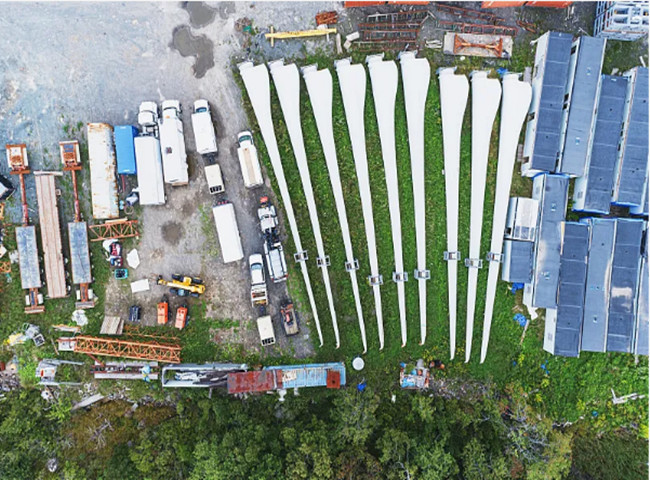As the world’s need for renewable energy expands, wind power, known for its eco-friendly nature, is gaining widespread adoption. Yet, the challenge of waste management, particularly regarding the recycling and reutilization of wind turbine blades, is increasingly prominent.

1. Current Status of Recycling of Wind Turbine Blades
Currently, wind turbine blades predominantly utilize fiberglass or composite materials, posing challenges for recycling post-use. Traditional methods like incineration or landfill are unsuitable due to material properties, risking environmental pollution. Efforts to integrate blade materials into construction or structural applications face barriers in widespread adoption due to technical and economic constraints.
In the United States, many old wind turbine blades end up in landfills. Take Casper, Wyoming, for example, where there is plenty of space to accommodate these wastes. However, this “burying it” treatment method is obviously not a long-term solution. It not only wastes resources but also occupies precious land resources.
2. Challenges and obstacles of recycling
The main challenges facing the recycling of wind turbine blades include technical difficulties and economic costs. From a technical perspective, the complex structure of glass fiber and composite materials makes them difficult to be recycled efficiently and environmentally friendly. Existing recycling technologies are either inefficient or produce new pollutants.
From an economic perspective, the cost of recycling wind turbine blades is often higher than their original manufacturing cost. This is mainly due to factors such as high energy consumption, high technical difficulty and limited market demand during the recycling process. Therefore, in the absence of an effective incentive mechanism, companies tend to choose to directly discard rather than recycle these blades.
3. Future prospects and suggestions
Despite the existing challenges in wind turbine blade recycling, advancements in technology and increasing environmental awareness are expected to drive improvements. Here are some recommendations:
- Boost R&D funding: Foster increased research investment in blade recycling tech for more efficient methods.
- Create policy incentives: Implement policies like tax breaks to engage businesses in blade recycling.
- Diversify applications: Explore new uses in construction and transport to enhance blade recycling value.
- Embrace sustainable materials: Encourage sustainable materials in blade manufacturing to address recycling concerns.
In conclusion, addressing wind turbine blade recycling demands collaborative efforts among governments, businesses, and research entities for effective solutions.

